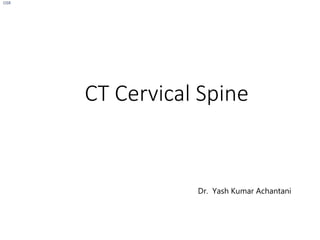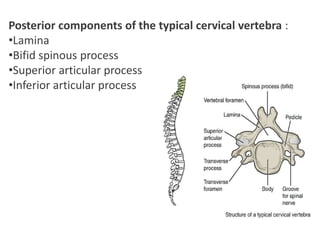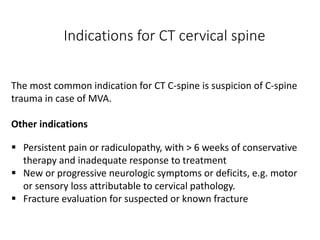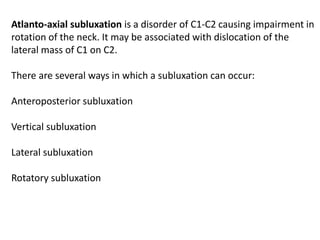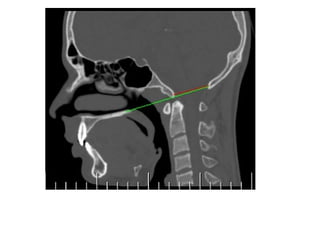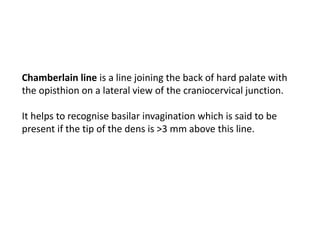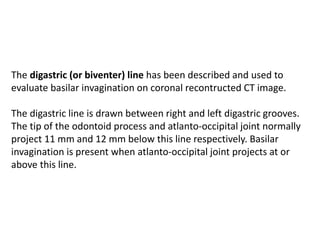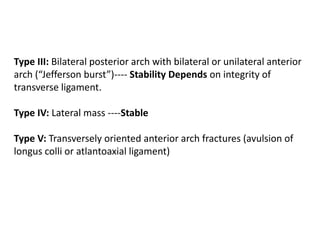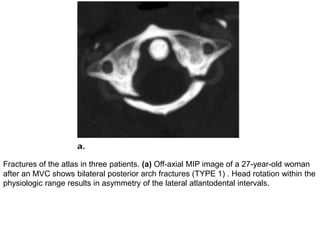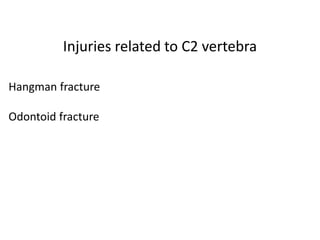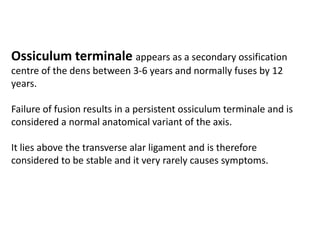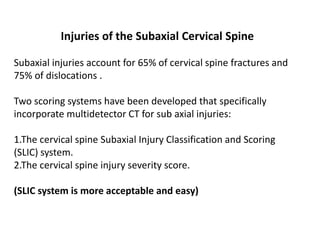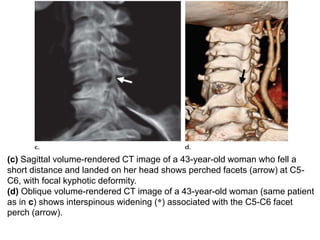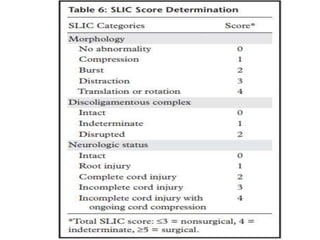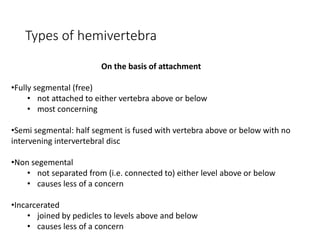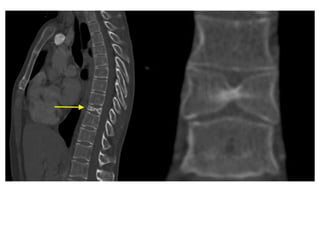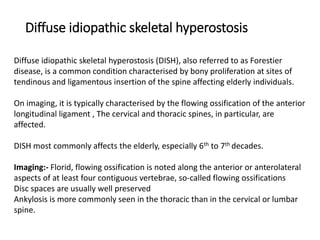This document provides a detailed overview of cervical spine anatomy and common cervical spine injuries seen on CT imaging. It begins with a description of cervical spine anatomy including the typical vertebrae from C3-C6 and the atypical C1 and C2 vertebrae. It then discusses common cervical spine injuries such as fractures of C1-C2, hangman's fractures of C2, and odontoid fractures. Classification systems for these injuries are provided along with example CT images. The document concludes with a brief discussion of subaxial cervical spine injuries.
